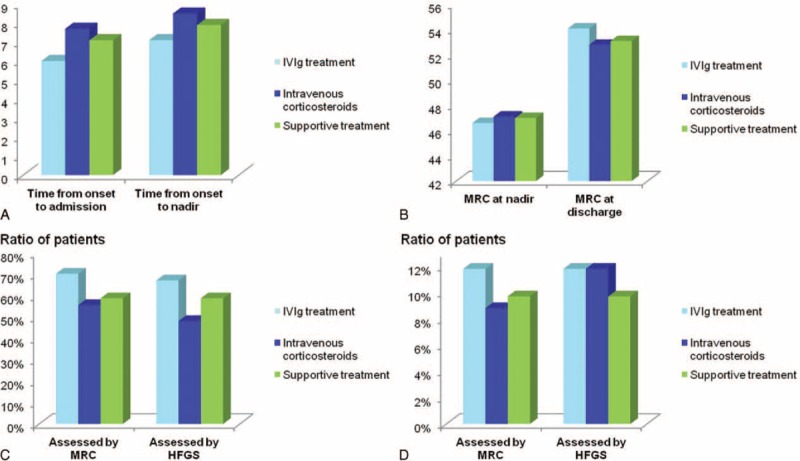FIGURE 4.

Supportive treatment was sufficient to patients who were able to walk with or without assistance. In patients who were able to walk with help, time from onset to admission and to nadir were 6.0 d and 7.1 d in intravenous immunoglobulin (IVIg) treatment group, 7.7 d and 8.5 d in intravenous corticosteroids group, 7.1 d and 7.9 d in supportive treatment group, respectively, which were not significantly different (P > 0.05) (A). MRC at nadir and at discharge were 46.6 and 54.1, 47.1 and 52.8, 47.0 and 53.1 in the 3 groups, which was as well comparable (B). Assessed by improvement of the Medical Research Council (MRC) sum score and Hughes Functional Grading Scale (HFGS) score, ratio of patients who were improved was respectively 70.3% and 67.2% in the IVIg group, 55.6% and 48.1% in intravenous corticosteroids group, 58.8% and 58.8% in supportive treatment group, which was comparable among the 3 groups (P > 0.05) (C). Thus, supportive treatment was sufficient to GBS patients who were able to walk with help (HFGS = 3). Furthermore, for patients with GBS who could walk unaided (HFGS = 1–2), the ratio of patients who were found improvement was 11.8% and 11.8% after IVIg treatment, which was similar to the intravenous corticosteroids group (8.8% and 11.8%) and supportive treatment group (9.7% and 9.7%) (D).
